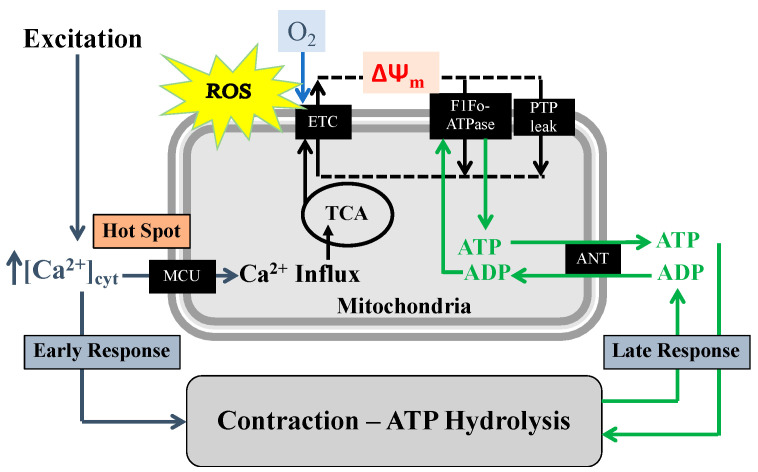Figure 2.
Our conceptual model demonstrates that in ASM cells, excitation, contraction, and energy production are coupled with two mechanisms. (1) On a shorter timescale, agonist-induced elevation of [Ca2+]cyt triggers activation of the mitochondrial Ca2+ uniporter (MCU) and Ca2+ influx, which increases tricarboxylic acid cycle (TCA) activity thereby providing H+ to the electron transport chain (ETC). (2) On a longer timescale, agonist-induced force/contraction results in ATP consumption and an increase in ADP, which increases ADP influx into mitochondria via the adenosine nucleotide transporter (ANT), stimulating ATP synthase (F1Fo-ATPase) activity. With excessive mitochondrial Ca2+ influx, an overload in mitochondrial Ca2+ concentration ([Ca2+]mit) can trigger the opening of mitochondrial permeability transition pores (mPTP), which are large conductance channels present in the inner mitochondrial membrane that reduce the H+ gradient and mitochondrial membrane potential (Δψm).

